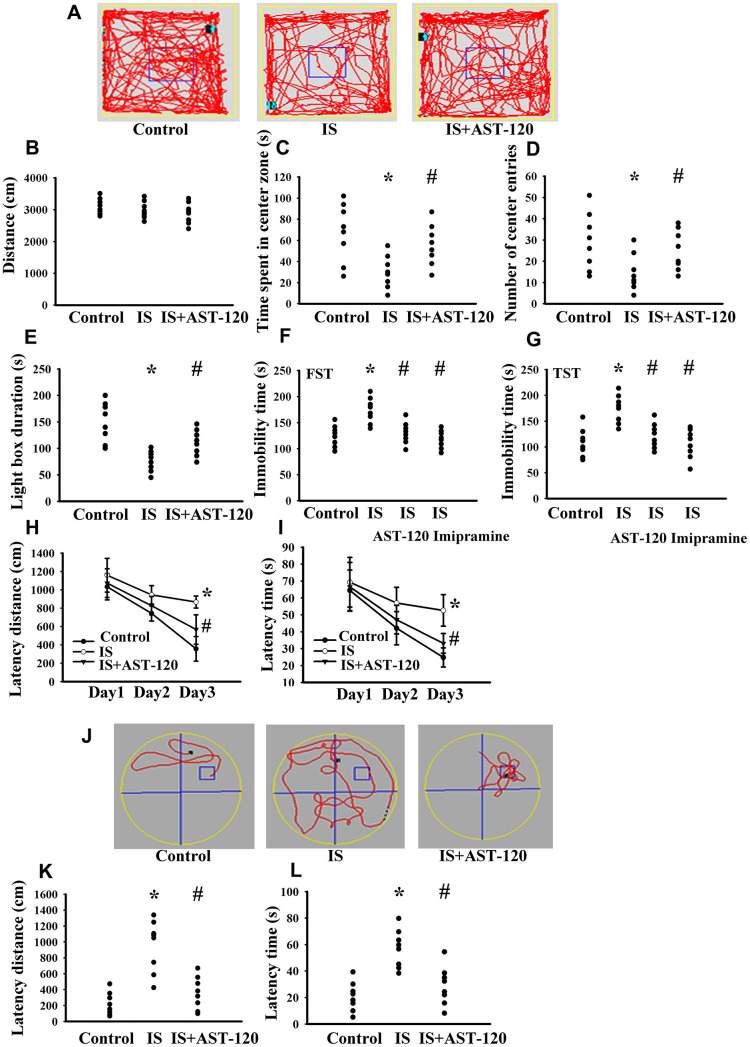Figure 4.
Indoxyl sulfate caused behavioral alterations. Unilateral nephrectomized mice were intraperitoneally injected with indoxyl sulfate (IS, 0 and 100 mg/kg) and the indoxyl sulfate-injected mice were orally given with AST-120 (0 and 400 mg/kg) for 7 weeks. The tracking paths (A), distance in movement of spontaneous locomotor activity (B), time spent in the center zone (C), and numbers of center zone entries (D) were evaluated by the Open Field Test. The duration of light preference was evaluated by the Light-Dark Box Test (E). The FST was conducted for a period of 5 min and the duration of immobility was recorded (F). The TST was performed for a period of 6 min and the duration of immobility was recorded (G). Antidepressant imipramine (20 mg/kg) was intraperitoneally administrated 1 h prior to the FST (F) and TST (G). In the Morris Water Maze Test, the escape distance (H) and escape time (I) in the acquisition phase were recorded from 1st to 3rd days. After training for 3 consecutive days, the swimming routes (J), escape distance (K), and escape time (L) required to reach the hidden platform were recorded. *p < 0.05 vs. control group, and #p < 0.05 vs. indoxyl sulfate alone (IS) group, n = 8.

